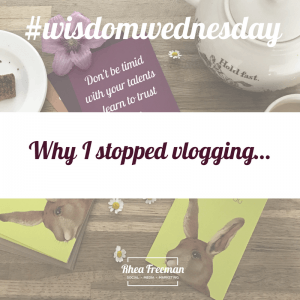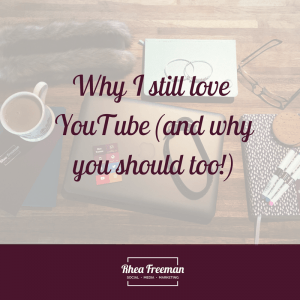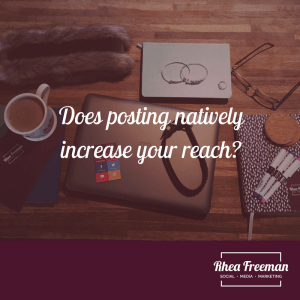 As you know, I’m a bit of a learning junkie. I love learning don’t just focus solely on business. As I write this, I’ve just finished a book on psychology, have started a book on photography (yep, really!), then I have a book on public speaking (in preparation for my TEDx talk) and then I have Arianna Huffington’s ‘Thrive’, which I started, but then stopped as it was picked as the Small & Supercharged Book Club’s book. As you can see… it’s a diverse mix! In this blog, I’m going to share some ways to learn on a budget. Why? Because I see huge value in upskilling and believe everyone should seek out knowledge. But I also appreciate that not everyone has the budget for some of the methods, hence I’ll be chatting about how to learn on a budget.
As you know, I’m a bit of a learning junkie. I love learning don’t just focus solely on business. As I write this, I’ve just finished a book on psychology, have started a book on photography (yep, really!), then I have a book on public speaking (in preparation for my TEDx talk) and then I have Arianna Huffington’s ‘Thrive’, which I started, but then stopped as it was picked as the Small & Supercharged Book Club’s book. As you can see… it’s a diverse mix! In this blog, I’m going to share some ways to learn on a budget. Why? Because I see huge value in upskilling and believe everyone should seek out knowledge. But I also appreciate that not everyone has the budget for some of the methods, hence I’ll be chatting about how to learn on a budget.
Finding the time to learn
Obviously reading books is one way to learn, and I do a lot of it. I know the next sentence makes me sound rather sad, but I rarely watch TV. Although watching something mindless has its place, I just felt it was a waste of my time to be doing it too often. So I diverted to books. So, after the children are in bed, I will read for a bit, and I love it.
It doesn’t all revolve around books!
Of course, learning doesn’t start and end with books. I don’t like to think about the money I spend on books too much (!) but I have to say I have found a way to buy a lot of them for next to no money (and I mean, I have picked some up for 1p plus postage!) but I’ll cover book buying on another blog and share some of my tips. Don’t get me wrong, I do buy a lot of new books too, but if it’s an older book, there are bargains to be had! If you like to learn by reading, there’s a plethora of free material out there. You can learn a HUGE amount on a budget. Actually, you can learn masses for free. I mean, this blog is one example… and there are plenty of other blogs too, obviously. In addition, many people have freebees created to grow their mailing lists, and a lot of these are really useful. If you’re also interested in other ways to learn, there’s lots out there… and lots for free or low cost too.
So free is best?
There’s nothing wrong with paying for learning materials, coaching, courses, etc. Far from it. In fact, I pay for all of them! I also believe that paid content is actually better, but that’s another discussion. My point with this article is that even if you have no money or are on a really tight budget, you can learn amazing things for free. It’s a real ‘how to’ guide for how to learn on a budget.
What’s the difference between free and paid for content?
There are lots of differences between paid for and free content and, in my experience, you have to ‘work harder’ for free content. By this, I mean you’ll need to kiss a few frogs to find the Prince of content. You’ll find it might take you longer to extract what you need… and it might be spaced out over a few blogs/type of content. You might also find that the content is produced in a less logical fashion. For example, if I was doing, say, a course on how to get into magazines, I would create it in such a way that it guided people through the process, gave examples, templates and helped show the possibilities using a range of media. It would all be in one place and flow. You can find out how to get published in magazines online. You can Google it, you can poke around this website, and there’s lots of information there, but you’ll need to read, filter, curate it and come up with a plan.
There’s plenty of ways to learn on a budget… here are a few free/low cost ways to learn on a budget…
Ways to learn on a budget
- Blogs – yep, the humble blog. Many thought leaders, entrepreneurs and experts have their own blogs – it’s the most basic form on content marketing and helps their SEO as well as their ‘status’, so many have blogs.
- Groups – there are many free groups (like my Small & Supercharged group on Facebook) that allow business owners to engage, ask questions and learn from each other. These can be so SO useful and I’ve see amazing things happen inside the S&S group in this way.
- Newsletters – subscribing to newsletters from people you feel can teach you something (hint, hint – I would love it if you’d sign up to mine – you’ll get PR, marketing and social media tips as well as general news from me and my clients… and I promise not to bombard you!), isn’t a bad idea. My advice here would be to pace yourself! If you sign up to too many in one hit you’ll realise that your inbox is full of stuff you won’t ever have the time to read…
- Podcasts – if you enjoy learning on the go, podcasts are for you! Actually, I often have one on in the background if I’m doing admin or something that is more of a process rather than creative. I also listen to podcasts when I walk the dog. There are some great ones out there – I work with Sam at Haynet on the Haynet Podcast and really enjoy listening to Sam’s (we do alternate episodes!). For more podcast inspiration, hope over to iTunes and select your genre and see what you can find.
- Books and audiobooks – yes, these are paid for if you want to own them, but the cost varies hugely.
- Videos – I LOVE YouTube and find the never ending stream of videos a joy. You can find videos about anything on YouTube, you can subscribe to channels you like and people you enjoy, and YouTube will even tell you when they’ve uploaded if you like. Again – shameless plug, but my YouTube Channel is here if you fancy subscribing!
I’m not going to include courses, retreats, coaching, masterminds and live events here because although I believe they are all hugely valuable when used correctly, they are an investment. If we’re looking at value, they can deliver a huge ROI, but as we’re looking purely at the pounds, shillings and pence, it would be wrong to include them here.
How do you like to learn? What’s the best way you learn for free? I’d love to know.


 If you’re part of my
If you’re part of my  Does posting natively increase your reach? Well, there are a few things to consider here – and a few points were raised in a previous blog about
Does posting natively increase your reach? Well, there are a few things to consider here – and a few points were raised in a previous blog about